On this week's NewsFlash, we explore a way to make injections painless, find out why lithium in the water supply could help mood stability and discover which animals have got natural rhythm. Plus, what we can learn from Swine 'flu DNA, and how this week in science history saw a breakthrough for the digital revolution.
In this episode
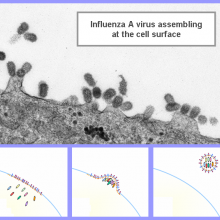
Better way to fight flu
Scientists have developed a pain-free injection system to immunise people against influenza. Writing in the current edition of PNAS, Emory University researcher Richard Compans and his colleagues describe how a system of microneedles, each measuring less than a tenth of the diameter of a traditional small hypodermic needle and designed just to penetrate the surface of the skin, can be used to protect mice against fataldoses of the flu. The tiny injection needles are mounted in a line on a plastic carrier and coated with a vaccine solution containing chemically-inactivated components of flu virus.
 The needles are then allowed to dry, in which form they are chemically stable, and may then be kept until needed. Vaccination is achieved by pressing the needles against the skin,which transfers the virus material from the needles. Tests on mice showed that within fourteen days the animals produced equivalent levels of antibodies to a test vaccine as animals that received traditional intramuscular flu injections. The team were also able to protect mice against a potentially fatal infection with a strain of influenza that killed unimmunised, control animals.
The needles are then allowed to dry, in which form they are chemically stable, and may then be kept until needed. Vaccination is achieved by pressing the needles against the skin,which transfers the virus material from the needles. Tests on mice showed that within fourteen days the animals produced equivalent levels of antibodies to a test vaccine as animals that received traditional intramuscular flu injections. The team were also able to protect mice against a potentially fatal infection with a strain of influenza that killed unimmunised, control animals.
The system works by exploiting the relatively large number of so-called professional "antigen presenting cells" (APCs) including Langerhans and dendritic cells which are present in the skin.These take up the injected materal and encourage the immune system to mount a response. And for inoculations that require larger doses of vaccinematerial or antigen, which some have suggested might be required for bird flu (H5N1) vaccines, the number of needles can simply be increased to boost the dose. But the major benefit of this new system is that the vaccine material on the needles is dry, meaning that unlike many traditional vaccines it doesn't need to remain refrigerated, making it potentially very useful for use in developing countries. Also, because the system does not resemble a traditional syringe and needle, and is also painless, it should help needle-phobics to overcome their fear of injections.
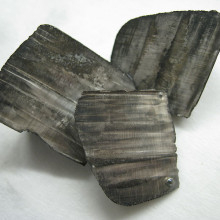
Lithium in tap water cuts suicide rates
Scientists in Japan have found a strong link between higher levels of the metal lithium in tap water and a reduced incidence of suicide.
Hirochika Ohgami and Takeshi Terao from Oita University led a team who measured the levels of lithium in the tap water of 18 municipalities of a region of Japan called Oitra and compared that against the rates of suicide among the million people who live there. The study published in the British Journal of Psychiatry shows that between 2002 and 2006, in areas where lithium levels were highest, suicide rates were significantly lower.
People with serious mood disorders like bipolar disorder are already treated with high doses of lithium to try and stabilise their moods, but this study shows that much lower doses, perhaps accumulating in the brain over time, may also have a positive impact on suicide rates.
The amounts of lithium in the drinking water ranged from 0.7 to 59 micrograms per litre, and this study raises the issue of whether lithium should be added on large scales to drinking water. That sort of mass and involuntary delivery of medicine is something that will no-doubt stimulate hot debate. The authors emphasize that it is still very early days, and that wider scale studies are now urgently needed to understand more about the affects of lithium in drinking water especially since it is known to have nasty side effects and can be toxic at higher doses.
Another recent study has shed light on how exactly lithium affects the brain and helps stabilize bipolar disorder, something scientists have been quite understood. Professor Adrian Harwood of Cardiff School of Biosciences in the UK, led a study in the journal Disease Models and Mechanisms which has pinpointed a possible pathway that lithium may act through.
Laboratory tests of cell cultures has found that by inhibiting an enzyme called inositol monophosphatase (IMPase), lithium reduces the production of a molecule called PIP3 which is known to play an important role in controlling brain cell signalling. A certain variant of the gene or IMPase, has been previously linked to people with bipolar disorder and it could be that lithium is somehow counteracting changes in that gene. The precise mechanism remains to be discovered but this study points the way for future studies.
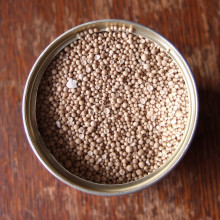
Interfering with inflammation
US scientists have developed a method to selectively shut off genes linked to inflammation all around the body. Writing in this week's Nature, University of Massachusetts researcher Michael Czech and his colleagues describe how they have produced gene-silencing particles which are orally active and can block the production of inflammatory signals linked to diseases including rheumatoid arthritis and septic shock. Surprisingly, part of the key to the breakthrough was baker's yeast cells, which coat themselves with a sugary layer of a chemical called beta-1,3-D-glucan which is itself recognised and picked up by inflammatory cells called macrophages. The team found that by treating yeast cells with acid and solvent solutions they were able to dissolve away all but this outer layer, which remained like hollow husks, each about one five hundreth of a millimetre across.
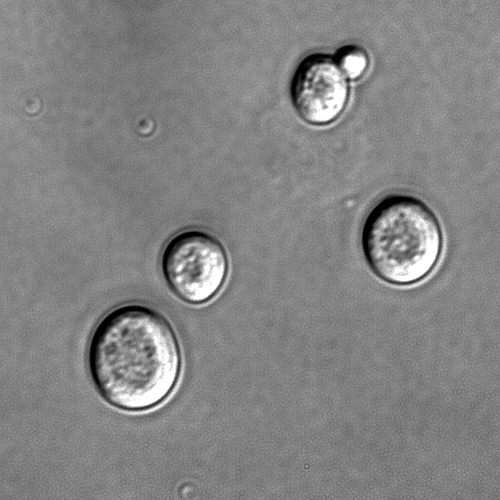 These they then could then refill with short segments of genetic material called interfering RNA molecules. These are the genetic mirror images of certain cellular genes and when they enter cells they shut off their target gene by binding to the gene product and causing it to be broken down. In this case the researchers used interfering RNA molecules directed against two inflammatory genes called tnf-alpha and map4k4. When they fed the particles to mice, macrophages lining the animals' digestive tracts recognised the beta-1,3-D-glucan on the surface and picked them up. Once inside, rather like the Trojan Horse, the particles then discharged their gene silencing contents, shutting of the target genes in these cells.
These they then could then refill with short segments of genetic material called interfering RNA molecules. These are the genetic mirror images of certain cellular genes and when they enter cells they shut off their target gene by binding to the gene product and causing it to be broken down. In this case the researchers used interfering RNA molecules directed against two inflammatory genes called tnf-alpha and map4k4. When they fed the particles to mice, macrophages lining the animals' digestive tracts recognised the beta-1,3-D-glucan on the surface and picked them up. Once inside, rather like the Trojan Horse, the particles then discharged their gene silencing contents, shutting of the target genes in these cells.
The researchers think that it may be possible to use the same technique to treat certain inflammatory disorders, such as rheumatoid arthritis which is triggered by the body attacking its own tissues. Blocking the production of the signals thought to drive the process should help to control it. The team tested the potential for doing this by exposing treated mice to the substance LPS (lipopolysaccharide), which usually produces a profound inflammatory reaction. Compared with control animals, which succumbed rapidly, nearly half of the treated animals were protected. This approach could, therefore, pave the way for the development of orally-active targeted ways to shut off genes linked to certain disease conditions.
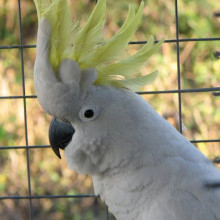
Boogying birds
News came out this week that it isn't just people who enjoy a moving and dancing to favourite but birds, it turns out, also like to boogie.
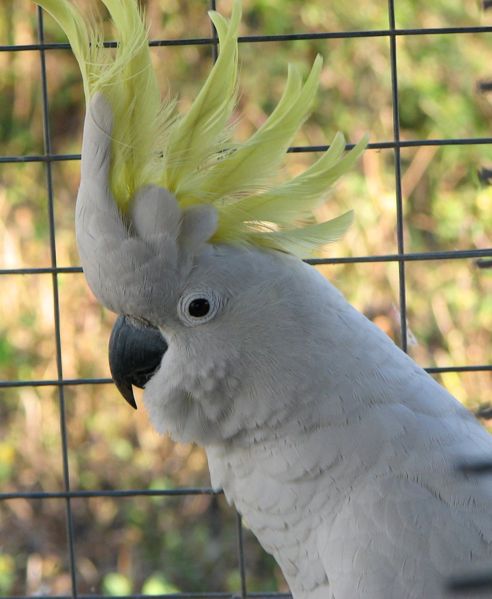 Aniruddh Patel from the Neurosciences Institute in San Diego, first saw Snowball the sulphur crested cockatoo on a video clip on the website youtube bobbing his head and tapping his feet in time to a pop song.
Aniruddh Patel from the Neurosciences Institute in San Diego, first saw Snowball the sulphur crested cockatoo on a video clip on the website youtube bobbing his head and tapping his feet in time to a pop song.
To find out if Snowball really was feeling the beat, Patel led a team who filmed Snowball dancing to Everybody by the Backstreet boys (one of snowballs favourite tunes). They measured how closely his head bobs and feet taps synchronised with the main beats of the music, and found that rather than randomly bobbing around when music is played and occasionally falling in time with the rhythm, Snowball kept time with the beat just as well as humans volunteers did. He even kept pace as the music was incrementally speeded up and slowed down without changing the pitch of the song.
A second team, also publishing in the journal Current Biology, led by Adena Schachner from Harvard University, found a similar results with another sulphur-crested cockatoo as well as an African grey parrot.
These studies support the theory that entrainment to music, otherwise known as dancing, arose because it just happens that our brains are wired up to be able to hear sounds and mimic them, something that both humans and parrots can do. Vocal mimicry requires a close link between auditory and motor circuits in the brain, and a very similar set up also allows us to respond to music with movement and dance.
Schachner's team searched through thousands of youtube clips apparently showing animals dancing, and by carrying out the same video analysis they found it was only vocal mimics that were actually keeping in time with the beat. That included 14 species of parrot and an elephant.
We are still a way off fully understanding how and why dancing and enjoying music arose in people. And maybe scientists will work out ways of testing the whether other known vocal mimics can dance, including include hummingbirds, songbirds, dolphins, seals, and some bats. But these studies have already taken us a little closer to understanding what led to us all to enjoying a good boogie on the dance floor.
You can see Snowball dancing
here.

11:52 - The Genetics of Swine Flu
The Genetics of Swine Flu
Professor Wendy Barclay, Imperial College London
Chris - Now also in the news this week, how could you have missed it, the fact that we are perhaps on the verge of a pandemic or perhaps not? People are very worried about this swine influenza from Mexico but surely more answers than any can be obtained by sequencing the virus and understanding what its genetic story is and joining us now from Imperial College in London is Professor Wendy Barclay. She is an influenza virologist. Hello Wendy!
Wendy - Hello!
Chris - Good to have you with us on the Naked Scientists. Tell us a bit about where we stand with this, what have we learned so far from looking at the genetics of this virus?
Wendy - Well, over the course of last weekend and then into last week, most of the genes of a number of different isolates of this virus has been sequenced. That information has been shared by scientists over the web, which allows us all to have a look and see whether or not this virus has got any of the particular traits that we would associate with, for example, a highly pathogenic virus that we can begin to predict, what to expect as this virus spreads into people and what sort of actually we should be preparing ourselves to take.
Chris - What about where it came from Wendy? What does the sequence actually tell us about its origins?
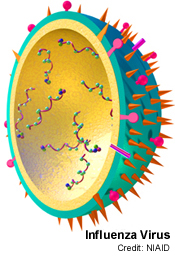 Wendy - Very interesting. The swine influenza is quite a complicated beast, it turns out. Your listeners may or may not know but influenza virus has its genome splitting to eight discrete pieces known as the segments of RNA and in general, each one of those species encodes one protein although some of them encode two. So there's about 11 proteins spread on eight species and you could think of these a little bit like chromosomes if you like, that they are discrete physical entities that encode genes.
Wendy - Very interesting. The swine influenza is quite a complicated beast, it turns out. Your listeners may or may not know but influenza virus has its genome splitting to eight discrete pieces known as the segments of RNA and in general, each one of those species encodes one protein although some of them encode two. So there's about 11 proteins spread on eight species and you could think of these a little bit like chromosomes if you like, that they are discrete physical entities that encode genes.
Now we can tell by looking at those segments of RNA that way, way back some of those RNA segments were once segments of viruses that were circulating in humans and also in birds and in pigs. So what happened with swine influenza back in the late 1990s is that a particular strain appeared in the Americas which contained gene segments from at least three different viruses from three different types of hosts, humans, birds and pigs, and this constellation has been known as the 'Triple-reassortant genome' or TRIG.
That seems to be a very happy virus. It was spreading around the pigs in the Americas very well, shuffling a little bit on the outside its antigenic properties but the basic backbone of the virus seemed pretty fit. Now what's now happened is that that pig virus from the Americas has somehow muddled up with another pig virus which until recently was really only known about in Europe and the two of those have mixed together, one would imagine, in a pig which perhaps became co-infected by the two viruses and have produced this final Mexican flu.
Chris - Why do you think that this interesting combination has now suddenly decided that it's going to jump out of the pig and start infecting humans?
Wendy - Yeah, that's a super question and obviously something that we need to understand and lots of people are having to think about that the TRIG genome that was existing in the Americas since the 1990s didn't do that until now.
The insides of the virus have stayed more or less the same so the best bet is that it's the particular combination of the outside genes, the hemagglutinin and the neuraminidase, on the TRIG backbone which has allowed this jumping to occur but it's early days to say that yet and obviously that is just based on sequence gazing, what we are going to need to do now is real biology to try and understand why those surface genes, the H and the N, the particular ones come together and allow this jump to happen.
Chris - Thank you Wendy for explaining that. Could you just finally tell us what are the big priorities for virologists to now do in relation to this pandemic virus or potential pandemic virus, what would the big questions that people are now beginning to ask, be?
Wendy - Yes, well I mean obviously from a practical point of view we've got to know is this virus susceptible to antiviral drugs and will it remain so? So the good news at the moment from the gene gazing is that yes it is at the moment as far as we can see and of course we know that people are responding well to timely flu treatments but we also know that single-point mutations can render such viruses resistant.
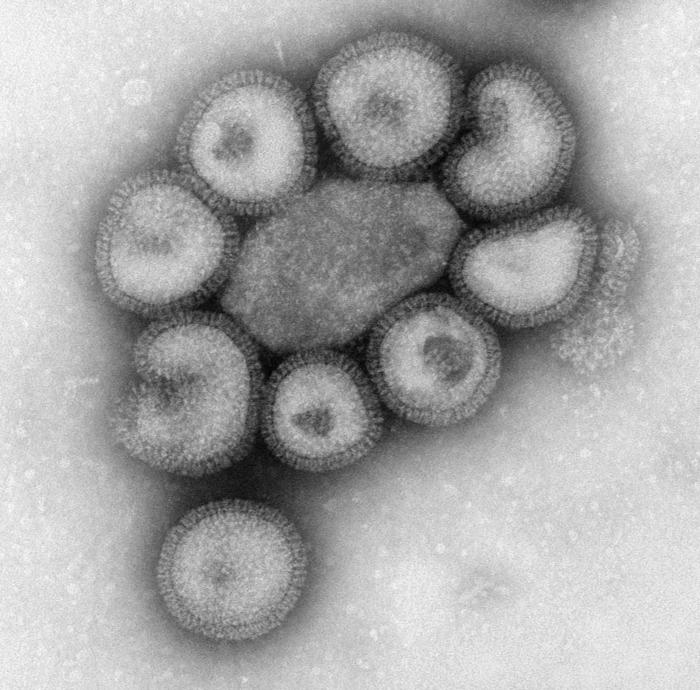 So we need to know, for example, will this particular virus tolerate those mutations or will there be a sort of cost to them which would mean that any resistant virus is emerged where we are unfit or no longer transmissible between people.
So we need to know, for example, will this particular virus tolerate those mutations or will there be a sort of cost to them which would mean that any resistant virus is emerged where we are unfit or no longer transmissible between people.
Another key question is whether or not vaccines that we have already can offer any sort of immunity? To be honest there's so little sequence, the homology between human strains that we have been vaccinating people against and this one, that's unlikely but we certainly need to check it out to be sure. And finally the question that is sort of big and known is whether or not this virus is going to change anymore than it has already?
We know it has managed to jump into people but is it going to stay the same as it is now or is there a chance that it could mutate and if it did mutate, could it get any more virulent or is it more likely to go the other way and sort of adapt back to it's host and live in harmony.
Chris - Well let's hope not. Thank you very much. That's Wendy Barclay who is Professor of 'Flu Biology, Virology at Imperial College in London.
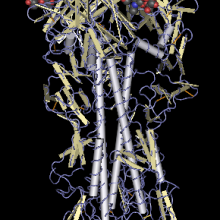
17:33 - Musical Viruses
Musical Viruses
Stephan Zielinski, Stephan-Zielinski.com
Helen - Well it's not just science that we get from a sequence of DNA but we can also use it to generate music. Have a listen to this.
Stephan Zielinski - Swine Flu Haemagglutinin
Sounds pretty good, doesn't it? Well we've got Stephan Zielinski with us. He created this music using the sequence of amino acids in a protein in the swine flu virus called haemagglutinin and that's one that causes red blood cells to collect together. So Stephan, why make music from a virus that might trigger the next big pandemic?
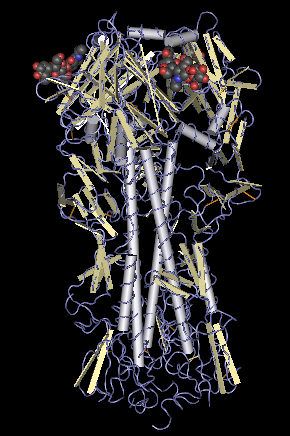 Stephan - Well I was just sitting around feeding my dancing bats on the high lithium tap water and a buddy of mine from the Mayo Clinic sent out the sequence that they had just come up with for this particular variation of hemagglutinin and I was wondering if I could translate it into something that I would have an easier time understanding and may be hear the functional groups - if I could translate them to the music then perhaps a symphony has movements so I was hoping that I could hear a division within the music between the functional groups, and I couldn't but may be other people can.
Stephan - Well I was just sitting around feeding my dancing bats on the high lithium tap water and a buddy of mine from the Mayo Clinic sent out the sequence that they had just come up with for this particular variation of hemagglutinin and I was wondering if I could translate it into something that I would have an easier time understanding and may be hear the functional groups - if I could translate them to the music then perhaps a symphony has movements so I was hoping that I could hear a division within the music between the functional groups, and I couldn't but may be other people can.
Helen - So tell us how did you get about making this piece of music?
Stephan - Well I am going to cheat and answer a closely related question which is when you listen to the music what parts of what you're hearing came from me and what parts really came from the virus? Viruses obviously don't share a lot of characteristics with music. They don't have a key, they don't have a time signature and they don't have orchestrations. So all of that stuff is things that I came up with and put into the piece itself.
What really came from the virus and all of this is the melody. Now proteins are made out of 20 amino acids in life as we know it and these 20 amino acids come in various classifications, you know a specific amino acid might be hydrophobic or it might not be. It might be aliphatic; it might be aromatic. What I did was I took the amino acids and divided them up by chemical category and assigned each category to an instrument. So for instance the piano got nine of the amino acids.
From there I sorted them by van Der Waal volume which is approximately how big the amino acid, how much space it takes up, and then by analogy to basic acoustic I assigned the large ones to relatively low notes and the small ones to relatively high notes. So when you listen to the music the interplay between the various instruments and the specific melody that's picked out, that's all come from the virus.
Helen - Excellent. Well we are certainly enjoying listening to it and it's quite a new experience for us here. So thanks Stephan. That was Stephan Zielinski and he has taken the sequence of amino acids in the swine flu virus and used it to sequence some music. You can find out more about him online at Stephan-Zielinski.com.

20:47 - This Week in Science History - The Integrated Circuit
This Week in Science History - The Integrated Circuit
Sarah Castor-Perry
This week in science history saw, in 1952, the inventor Geoffrey Dummer present his idea of the integrated circuit, now an essential component of all modern computers, to the US Electronic Components Symposium. Although his attempts at building such a circuit failed and the first working examples were built by Kilby and Noyce in 1958, Dummer is known as 'the Prophet of the Integrated Circuit'.
 Dummer was born in 1909 in Yorkshire, England. He worked in electronics from the age of 22 and during the Second World War he worked for the Air Ministry Research Establishment, where he designed and installed over 70 types of radar training equipment. He also travelled to the United States and Canada to train men in the use of the radar equipment. He thought that many of the electrical components of the machines used for radar were not good enough and over the next decade or so explored techniques for creating more reliable circuits.
Dummer was born in 1909 in Yorkshire, England. He worked in electronics from the age of 22 and during the Second World War he worked for the Air Ministry Research Establishment, where he designed and installed over 70 types of radar training equipment. He also travelled to the United States and Canada to train men in the use of the radar equipment. He thought that many of the electrical components of the machines used for radar were not good enough and over the next decade or so explored techniques for creating more reliable circuits.
A circuit for something like a computer is like a very complicated version of the circuit diagrams we learn about in physics at school. Components that carry out certain jobs are all connected together to give the properties necessary to, say, save a document to your computer or play a downloaded video on your mobile. Before the Integrated Circuit, all these components - transistors and resistors that act like tiny little switches - were soldered (sort of like gluing down with liquid metal that will conduct electricity) to circuit boards individually.
Dummer suggested that a way to make circuits more efficient would be to use sheets of semiconducting material, like silicon. Now this is not to be confused with silicone that is found in breast implants. Silicon is a metalloid - found between the metals and non-metals on the periodic table, with some metallic and some non metallic properties. Pure silicon doesn't conduct electricity very well, so to vary its conductivity, a process called impurity doping is carried out, where ions of other elements like phosphorus and arsenic are introduced into the silicon. Before this doping though, the silicon itself must be exceptionally pure - with only one in 10 to the 10 atoms being non silicon. That's like one grain of sugar in ten buckets of sand. Depending on what element is introduced, the conductivity can be low or high, with different levels of conductivity needed in different parts of the circuit.
 An Integrated Circuit allows miniaturization of the parts needed to make something like a computer work, hence the other name microchip. They can be as small as just a few millimetres square and have up to 1 million transistors per square millimetre. Their small size means that ICs are more efficient too - with less material used and much less distance for information and electricity to travel, reducing loss of information and reducing the amount of power needed.
An Integrated Circuit allows miniaturization of the parts needed to make something like a computer work, hence the other name microchip. They can be as small as just a few millimetres square and have up to 1 million transistors per square millimetre. Their small size means that ICs are more efficient too - with less material used and much less distance for information and electricity to travel, reducing loss of information and reducing the amount of power needed.
ICs are also cheaper to manufacture than discrete circuits as they can be mass produced - layers of differently conducting materials are printed onto the chips to create the circuit, just as Dummer had suggested, and then areas 'cut out' to reveal the different layers and change how they are connected together.
The IC is part of what many academics believe is one of the greatest technological revolutions in the history of mankind - right up there with agriculture and industry - the digital revolution. The digital age we live in now is dependent on these circuits - laptops, the internet, mobile phones, iPods, handheld games consoles, everything like that. Dummer's presentation was the first step on the road to this revolution, giving us so many things that today we could not live without.
Related Content
- Previous Night Time Weight Loss
- Next Tackling Transport









Comments
Add a comment